Q
Where is the Toyota Tundra made?
The Toyota Tundra is mainly produced at the factory in San Antonio, Texas, USA. This full - size pickup truck is specifically designed for the North American market. Therefore, the production base is located in the United States to better meet the needs of local consumers. At the same time, it can also reduce transportation costs and improve supply efficiency. For Malaysian consumers, although the Tundra is not sold locally through official channels, some parallel importers may introduce this model. So, knowing its production location information is very helpful for users who are interested in buying parallel - imported vehicles. It's worth mentioning that the Tundra is known for its powerful V8 engine and excellent towing capacity, making it very suitable for situations where heavy - duty work vehicles are needed. However, considering Malaysia's right - hand drive regulations and high import taxes, this vehicle is not common locally. If you're interested in large pickup trucks, you can also pay attention to models like the Toyota Hilux, which are more suitable for the Southeast Asian market. They have more comprehensive after - sales services and parts support locally.
Special Disclaimer: This content is published by users and does not represent the views or position of PCauto.
Related Q&A
Q
How many litres is a Toyota Tundra fuel tank?
The fuel tank capacity of the Toyota Tundra varies depending on different years and configurations. The latest models usually come with a large-capacity fuel tank of about 32.2 gallons (approximately 122 liters), which is suitable for long-distance driving or heavy load requirements. This design is quite common among pickup truck models, as it can reduce the frequency of refueling and enhance practicality. For users in Malaysia, although the Tundra is not a mainstream local model, its fuel tank capacity matches its powerful V6 or V8 engine, ensuring sufficient driving range, especially suitable for scenarios that require frequent long-distance driving or off - roading.
It should be noted that the fuel tank capacity may vary slightly depending on specific models (such as SR5, Limited, or TRD Pro versions) or market configurations. It is recommended to check the official specifications or consult the dealer before purchasing a vehicle to obtain accurate information. In addition, while a large fuel tank is convenient, it also increases the overall vehicle weight, which may slightly affect the fuel consumption performance. Therefore, in daily use, one needs to balance the actual needs with fuel economy.
Q
How long will a Toyota Tundra Hybrid battery last?
The hybrid battery life of the Toyota Tundra Hybrid typically ranges from 10 to 15 years, depending on usage conditions and maintenance. The tropical climate in Malaysia may have a certain impact on the battery life. However, Toyota's hybrid battery design has taken into account the adaptability to high-temperature environments. So, as long as regular maintenance is carried out, the battery performance can be maintained for a long time.
To extend the battery life, it is recommended to avoid exposing the vehicle to extreme high temperatures for a long time, regularly check the battery cooling system, and keep the battery in an appropriate charging state. The cost of replacing the hybrid battery is relatively high, but Toyota offers a battery warranty for up to 8 years or 100,000 miles (about 160,000 kilometers), which provides additional protection for car owners.
In addition, the advantages of hybrid technology lie in its fuel economy and environmental performance. For Malaysian car owners, this can not only save fuel costs but also reduce carbon emissions, which is in line with the global environmental protection trend. If you have more questions about hybrid technology, you can consult your local Toyota dealer, and they can provide more detailed maintenance advice and technical support.
Q
How many litres per 100km does a Toyota Tundra Hybrid use?
As a full-sized hybrid pickup truck, the fuel consumption of the Toyota Tundra Hybrid varies depending on specific driving conditions and configurations. The official data shows that its combined fuel consumption is approximately between 9.8 and 10.7 liters per 100 kilometers, which is a significant improvement compared to the traditional fuel-powered Tundra (about 13-15 liters per 100 kilometers). This is thanks to its hybrid system consisting of a 3.5-liter V6 twin-turbocharged engine and an electric motor, which can provide strong power while also taking fuel economy into account.
For Malaysian users, although the Tundra Hybrid has not been officially launched in the local market, the fuel consumption performance and hybrid technology of this vehicle are worth paying attention to. Especially considering the fluctuating oil prices and the increasing environmental awareness in Malaysia, hybrid vehicles may become a practical choice in the future.
It should be noted that the actual fuel consumption is affected by the load, road conditions, and driving habits. For example, frequent acceleration or high-speed driving may result in a fuel consumption close to 12 liters per 100 kilometers, while smooth driving or urban commuting may lead to a consumption of less than 10 liters per 100 kilometers. If Malaysian consumers are interested in hybrid pickups, they can also refer to the fuel consumption data of similar models such as the Ford F-150 Hybrid (about 9-11 liters per 100 kilometers) for a horizontal comparison.
Q
Is the Toyota Tundra a hybrid or non hybrid?
The Toyota Tundra currently offers both Hybrid and Non - Hybrid versions, depending on the model year and configuration. For example, the third - generation Tundra launched in 2022 first introduced the i - FORCE MAX hybrid system. It combines a 3.5 - liter V6 twin - turbocharged engine with an electric motor, capable of outputting 437 horsepower and 790 N·m of torque, significantly improving fuel economy and power performance. In contrast, the non - hybrid version still uses a traditional fuel engine.
For Malaysian consumers, hybrid models can balance performance and energy - saving during long - distance driving or when there are heavy - load requirements. However, it's necessary to check whether the relevant versions are introduced in the local market, as the vehicle configurations in Southeast Asian regions may be adjusted according to market demand. Hybrid technology has become a global trend for pickups. Competitors like the Ford F - 150 Lightning have also launched electrified options. It is recommended to consult local dealers to confirm the latest specifications before purchasing a car. At the same time, you can compare the differences in hybrid technologies among different brands. For instance, Toyota's THS system is well - known for its maturity and reliability, making it suitable for users who value durability.
Q
What caused the Toyota Tundra engine failure?
Engine failures in the Toyota Tundra can be caused by a variety of factors, including improper maintenance, oil - related issues, or cooling system malfunctions. For example, failing to change the oil for an extended period may result in insufficient lubrication, which can lead to internal engine wear. In Malaysia's hot and humid climate, inadequate maintenance of the cooling system can also cause the engine to overheat. Additionally, fuel quality and sensor malfunctions can affect the engine's performance.
For large - displacement vehicles like the Tundra, regular maintenance is particularly crucial. It is recommended that owners follow the manufacturer's maintenance manual, use the appropriate grade of oil and fuel, and regularly check components such as coolant and belts. Malaysian owners also need to be aware of the impact of the high - temperature and rainy environment on the engine. For instance, moisture can cause electrical circuit problems, and during high - load driving (such as towing heavy objects), it is essential to ensure that the cooling system is working properly. If you notice abnormal engine noises, a decrease in power, or warning lights on the dashboard, you should have the vehicle inspected and repaired promptly to prevent further damage.
Q
Is the Toyota Tundra a reliable car?
As a full-sized pickup truck targeting the North American market, the Toyota Tundra has a good reputation for reliability. Its body-on-frame structure and well-established V6/V8 powertrain have been long-term market-tested, showing stable performance in terms of durability. It's especially suitable for some users in Malaysia who need to deal with rough terrains or heavy-load requirements.
The Tundra is equipped with a high-strength steel chassis and an optimized suspension system, which can well adapt to the diverse road conditions in Malaysia. However, it should be noted that due to its large body size, it may take some time to get used to driving it on the narrow urban roads in Malaysia.
The maintenance of the Tundra is relatively convenient under Toyota's global service system. But as an imported model, the parts supply cycle and cost may be slightly higher than those of locally assembled models.
For Malaysian consumers considering buying a full-sized pickup truck, apart from reliability, they should also take into account the actual usage scenarios. For example, whether they need to frequently enter and exit underground parking lots or narrow streets, as well as the local tax policies for large vehicles. These factors will all affect the actual usage experience.
Q
Who Produces Toyota Tundra Engines?
The engines of the Toyota Tundra are mainly designed and manufactured by Toyota Motor Corporation itself. Its production base is located at the Huntsville plant in Alabama, USA. This plant specializes in producing V6 and V8 engines for large pick-up trucks and SUVs like the Tundra. These engines are well-known for their reliability and durability, and are particularly suitable for the multi-terrain and climate conditions in Malaysia. Toyota's continuous innovation in engine technology, such as the adoption of the Dual Variable Valve Timing-intelligent (VVT-i) system and direct injection technology, not only improves fuel efficiency but also reduces emissions, which is in line with the global environmental protection trend. For Malaysian consumers, understanding the manufacturing background and technical features of the Tundra's engine can help them make a wiser decision when purchasing a large pick-up truck. Meanwhile, Toyota's local after-sales service network can also provide reliable support for vehicle owners, ensuring that the vehicles remain in good running condition over the long term.
Q
Is the Toyota Tundra turbocharged?
The Toyota Tundra currently offers two types of powertrain options: naturally aspirated and turbocharged, depending on the model year and configuration. For example, the third - generation Tundra launched in 2022 introduced a 3.5 - liter V6 twin - turbocharged engine (i - FORCE MAX hybrid system) for the first time, replacing the old 5.7 - liter V8 naturally aspirated engine. This turbocharged engine can output 437 horsepower and 790 N·m of torque, balancing both power performance and fuel economy.
For Malaysian consumers, the application of turbocharging technology in large - displacement pickups is becoming more and more common. This type of engine can provide stronger torque at low speeds, which is especially suitable for load - carrying or towing needs. It can also adapt to the local hot climate because modern turbo systems usually come with efficient cooling solutions.
It should be noted that the configurations of the Tundra may vary in different markets. It is recommended to confirm the specific specifications through the official channels of Toyota in Malaysia. In addition, regular maintenance of turbocharged vehicles (such as oil changes and cooling system inspections) is crucial for maintaining performance. This kind of knowledge is very valuable for Malaysian consumers considering buying high - performance pickups.
Q
How long do Toyota tundras last?
The Toyota Tundra is renowned for its excellent durability and reliability. Under normal maintenance conditions, it can usually travel between 300,000 and 500,000 kilometers or even more. The specific lifespan depends on factors such as driving habits, road conditions, and maintenance frequency. For users in Malaysia, the hot and humid climate may have a certain impact on vehicle components like rubber seals and electronic systems. However, as long as you regularly change the engine oil, check the cooling system, and promptly address minor issues, the durability of the Tundra can still be guaranteed. The V8 engine and sturdy frame design of this vehicle also provide a solid foundation for its long - term use. It's worth mentioning that Toyota has a relatively well - established after - sales service network in Malaysia, and there is an abundant supply of original parts, which strongly supports the long - term use of the Tundra. If you're considering buying a used Tundra, it is recommended to focus on checking the engine condition, chassis rust, and maintenance records. Usually, a well - maintained used car can still offer reliable performance. Overall, the Tundra is a durable pickup truck suitable for Malaysian road conditions.
Q
Is the Toyota Tundra petrol or diesel?
Currently, the Toyota Tundra mainly offers gasoline engine versions in the Malaysian market. Specifically, it is equipped with a 3.5 - liter V6 twin - turbocharged gasoline engine (code - named V35A - FTS), which belongs to the Toyota Dynamic Force series and is paired with a 10 - speed automatic transmission. This powertrain focuses on the balance between high performance and low fuel consumption. Although the Tundra once had a diesel version in the North American market (such as the 5.7 - liter V8 diesel engine launched in 2008), the current models no longer offer the diesel option. For Malaysian consumers, the gasoline - powered Tundra is more suitable for the local usage environment, as the gas station network in Malaysia is mainly for gasoline, and diesel vehicles have to face higher road taxes and maintenance costs.
It's worth mentioning that in recent years, Toyota has gradually reduced the R & D of diesel passenger cars globally and shifted its focus to hybrid and hydrogen energy technologies. For example, the Camry and Corolla Cross available in Malaysia already offer hybrid versions. If users need a diesel pickup with stronger torque, they can consider the locally assembled Toyota Hilux. Its 2.4 - liter and 2.8 - liter diesel engines perform better in load - carrying and off - road scenarios.
Latest Q&A
Q
Does the 2020 Honda Accord have transmission problems?
The 2020 Honda Accord has performed well overall in the Malaysian market. Its CVT and 10-speed automatic transmissions (depending on the trim) are technically mature, with most owners reporting smooth and reliable operation. However, some isolated cases may experience slight low-speed hesitation or delayed shifting, which are common characteristics of CVT transmissions rather than malfunctions. Honda Malaysia has not issued any large scale recalls or technical bulletins for this model regarding the transmission. It is recommended to check the transmission fluid condition during regular maintenance to ensure optimal performance. For consumers considering a used 2020 Accord, it is advisable to conduct a pre-purchase inspection through an authorized Honda service center, focusing on reading transmission fault codes and historical data. Notably, while CVT transmissions are known for their fuel efficiency, driving style can affect their lifespan. It is recommended to avoid frequent hard acceleration to extend component longevity. If unusual shifting vibrations or warning lights appear, contact an authorized Honda service point promptly for professional diagnosis. All Honda service centers in Malaysia are equipped with dedicated diagnostic equipment to quickly identify issues.
Q
What year to avoid Accord?
In Malaysia, the Honda Accord is a popular mid-size sedan, but certain model years can have some common issues that buyers should watch out for when shopping around. Based on owner feedback and expert reviews, some 2013 and 2014 Accord models had problems with transmission jerking and electronic system glitches, especially the CVT-equipped versions, which might develop rough shifting after long-term use. Additionally, owners of 2008 to 2010 Accords have reported higher fuel consumption and suspension noises. While these don't affect driving safety, they could increase long-term maintenance costs. If you're buying a used Accord, it's better to prioritize models from 2015 onwards—they saw significant improvements in reliability and fuel efficiency. Malaysia's hot and humid climate means you should also pay extra attention to the car's air conditioning system and electrical wiring when checking it out. Regular maintenance can really help extend the vehicle's lifespan. If your budget allows, the new Accord's hybrid system performs better in terms of fuel savings and driving experience, making it a good fit for buyers who value eco-friendliness and comfort.
Q
Which is better, the 2019 or the 2020 Honda Accord?
Both the 2019 and 2020 Honda Accord are really popular mid-size sedans in the Malaysian market. They don't differ much in core specs, but the 2020 model gets some nice detail upgrades. On the outside, the 2020 Accord has subtle tweaks to the front grille and wheel designs, giving it a more modern look, plus there are new exterior color options. Inside, the 2020 version comes standard with an 8-inch infotainment screen and an upgraded Honda Sensing safety suite, including more responsive adaptive cruise control and lane-keeping assist – features that were optional on some 2019 trims. Under the hood, both models offer the 1.5T turbo engine or the 2.0L hybrid system, with similar fuel economy, but the 2020's CVT transmission feels smoother in its tuning. For Malaysian buyers, if your budget allows, the 2020's upgraded features are worth considering, especially the improved safety tech which is really handy for daily driving. It's worth noting that 2019 models might offer better value in the used car market, but make sure to check the service records carefully if you go that route. The Honda Accord is known in Malaysia for its reliability and low maintenance costs, so both model years are solid picks – it just comes down to your budget and how much you want the newer features.
Q
Which year of Accord is most reliable?
In the Malaysian market, the Honda Accord is a favorite among consumers for its reliability and durability, especially the ninth-generation models produced from 2013 to 2017, which deliver an outstanding overall performance. This generation comes with an optimized 2.4-liter naturally aspirated engine or a 3.5-liter V6, offering smooth power delivery and decent fuel efficiency. It's paired with either a CVT or 6-speed automatic transmission—both mature technologies with low failure rates. Additionally, the ninth-gen Accord features a solid body structure and a well-tuned chassis that balances comfort and handling, making it suitable for Malaysia's diverse road conditions. If your budget is tight, the eighth-generation Accord (2008–2012) is also a solid pick, though keep in mind that some high-mileage used units may have issues like worn steering gears or suspension bushings. When shopping for a used Accord, prioritize checking regular maintenance records and pay close attention to the upkeep of critical components like transmission fluid and timing chains. As for hybrid versions, the i-MMD system in the tenth-generation Accord (2018 onwards) performs reliably, but battery life will gradually decline with years of use—professional testing is recommended before purchase. Overall, the Accord ranks among the most reliable in its class, and with proper maintenance, it can stay in great shape for the long haul.
Q
How long will a 2020 Accord last?
The 2020 Honda Accord can typically clock 200,000 to 300,000 kilometers or more with regular maintenance and proper use. Its actual lifespan depends on the owner's driving habits, how often it's serviced, as well as road conditions and climate in Malaysia. Under the hood, it’s packing Honda’s reliable Earth Dreams engine paired with a CVT transmission—proven tech with solid durability. Sticking to regular oil changes, transmission fluid replacements, and maintaining key components like the brakes and suspension can seriously extend its road life. Malaysia’s hot and humid weather might take a toll on rubber parts (think belts and seals) and the battery, so it’s a good idea to check these every six months and opt for original or high-quality replacement parts. Also, the Accord holds its value pretty well in Malaysia’s used car market, and a solid service history can bump up its resale price even more. For long-term ownership, follow the official maintenance manual and head to authorized Honda service centers for upkeep—you’ll get professional technical support and genuine parts that way. If you’re planning to keep it for the long haul, consider periodic deep maintenance too, like fuel system cleaning and coolant replacement, to keep the car in top shape.
View MoreRelated News
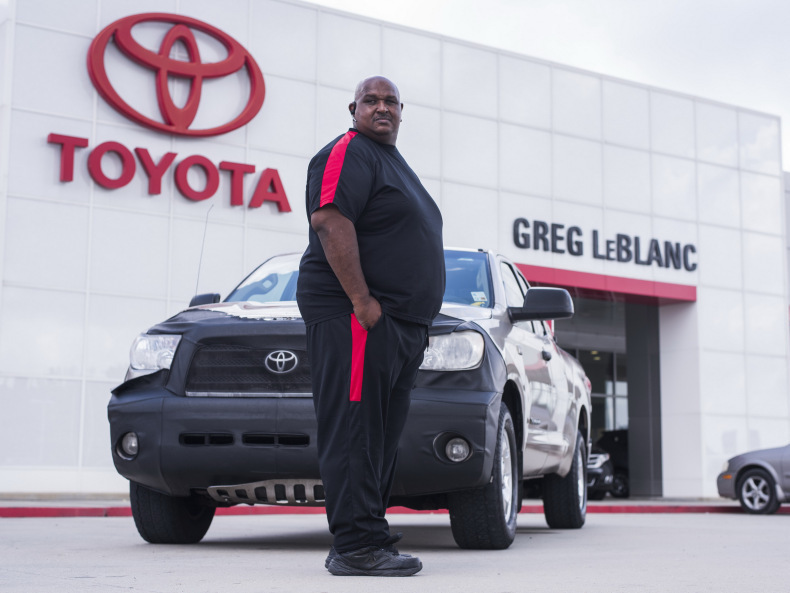
Toyota Tundra Owner Achieves the Second Million-Mile Milestone
LienApr 18, 2025

In Malaysia, which sliding door MPVs are available?
MichaelOct 30, 2025

Toyota Land Cruiser FJ did not disappoint, the most anticipated civilian off-road vehicle is back.
Kevin WongOct 21, 2025

Toyota bZ3X launched in Hong Kong and will continue to expand to other right-hand drive markets in the future
JamesOct 21, 2025

Toyota's comprehensive transformation: What changes will happen to Century, Lexus, GR, Toyota, and DAIHATSU?
Kevin WongOct 18, 2025
View More

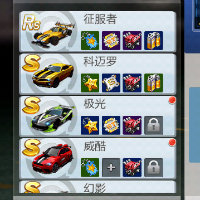


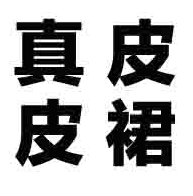



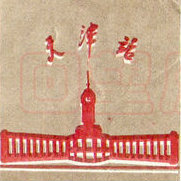

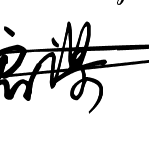

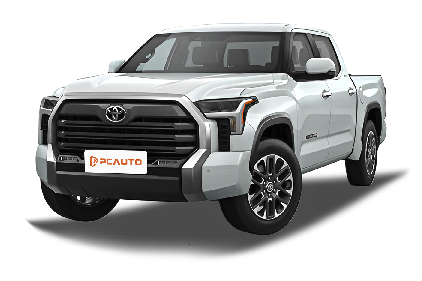





Pros
Cons